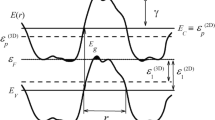Abstract
The increasing power demands of electronic applications, including 5G/6G, have made thermal management crucial. Joule heating in the device channel due to higher power leads to performance degradation and early failure. To address this, enhancing heat transfer using thermally conductive materials like diamond is important. Diamond integration onto the device’s top, near the channel, can be achieved through direct chemical vapor deposition. We chose a device-first approach to overcome fabrication challenges, as post-fabrication diamond growth at normal temperatures (> 650 °C) risks gate dielectric failure and higher leakage current. Instead, we developed a < 400 °C growth technique. The original gas mixture (H2 and CH4) at temperatures < 500 °C resulted in carbon deposits with low sp3 incorporation. We successfully achieved high-quality crystalline diamond growth at 400 °C by introducing oxygen species. Raman measurements of the < 400 °C grown diamond showed a strong sp3 peak with a small FWHM (~ 6 cm−1) and a negligible sp2 peak, similar to > 650 °C growth.
Graphical abstract





Similar content being viewed by others
Data availability
The data generated during this study is available upon request from the corresponding author.
References
M. Malakoutian, M.A. Laurent, S. Chowdhury, A study on the growth window of polycrystalline diamond on Si3N4-coated N-polar GaN. Crystals 9(10), 1–14 (2019). https://doi.org/10.3390/cryst9100498
M.A. Laurent, M. Malakoutian, S. Chowdhury, A study on the nucleation and MPCVD growth of thin, dense, and contiguous nanocrystalline diamond films on bare and Si3N4-coated N-polar GaN. Semicond. Sci. Technol. 35(1), 015003 (2020). https://doi.org/10.1088/1361-6641/ab4f16
M. Malakoutian et al., Record-low thermal boundary resistance between diamond and GaN-on-SiC for Enabling radiofrequency device cooling. ACS Appl. Mater. Interfaces 13(50), 60553–60560 (2021). https://doi.org/10.1021/acsami.1c13833
H. Song, J. Liu, B. Liu, J. Wu, H.M. Cheng, F. Kang, Two-dimensional materials for thermal management applications. Joule 2(3), 442–463 (2018). https://doi.org/10.1016/j.joule.2018.01.006
M. Malakoutian, C. Ren, K. Woo, H. Li, S. Chowdhury, Development of polycrystalline diamond compatible with the latest N-polar GaN mm-wave technology. Cryst. Growth Des. 21(5), 2624–2632 (2021). https://doi.org/10.1021/acs.cgd.0c01319
C. Ren, M. Malakoutian, S. Li, B. Ercan, S. Chowdhury, Demonstration of monolithic polycrystalline diamond-GaN complementary FET technology for high-temperature applications. ACS Appl. Electron. Mater. 3(10), 4418–4423 (2021). https://doi.org/10.1021/acsaelm.1c00571
M. Malakoutian et al. (2021) Diamond Integration on GaN for Channel Temperature Reduction. In: 2021 IEEE 8th Work Wide Bandgap Power Devices Appl. WiPDA 2021 - Proc. 70–74, 2021, https://doi.org/10.1109/WiPDA49284.2021.9645133.
Y. Muranaka, H. Yamashita, H. Miyadera, Characterization of diamond films synthesized in the microwave plasmas of CO/H2 and CO/O2/H2 systems at low temperatures (403–1023 K). J. Appl. Phys. 69(12), 8145–8153 (1991). https://doi.org/10.1063/1.347468
J. Stiegler, T. Lang, M. Nygård-Ferguson, Y. Von Kaenel, E. Blank, Low temperature limits of diamond film growth by microwave plasma-assisted CVD. Diam. Relat. Mater. 5(3–5), 226–230 (1996). https://doi.org/10.1016/0925-9635(95)00349-5
X. Xiao, J. Birrell, J.E. Gerbi, O. Auciello, J.A. Carlisle, Low temperature growth of ultrananocrystalline diamond. J. Appl. Phys. 96(4), 2232–2239 (2004). https://doi.org/10.1063/1.1769609
T.G. McCauley, D.M. Gruen, A.R. Krauss, Temperature dependence of the growth rate for nanocrystalline diamond films deposited from an Ar/CH4 microwave plasma. Appl. Phys. Lett. 73(12), 1646–1648 (1998). https://doi.org/10.1063/1.122233
Y. Liou, R. Weimer, D. Knight, R. Messier, Effect of oxygen in diamond deposition at low substrate temperatures. Appl. Phys. Lett. 56(5), 437–439 (1990). https://doi.org/10.1063/1.102758
Y. Liou, A. Inspektor, R. Weimer, D. Knight, R. Messier, The effect of oxygen in diamond deposition by microwave plasma enhanced chemical vapor deposition. J. Mater. Res. 5(11), 2305–2312 (1990). https://doi.org/10.1557/JMR.1990.2305
Y. Liou, A. Inspektor, R. Weimer, R. Messier, Low-temperature diamond deposition by microwave plasma-enhanced chemical vapor deposition. Appl. Phys. Lett. 55(7), 631–633 (1989). https://doi.org/10.1063/1.101807
S. Keller et al., Metalorganic chemical vapor deposition of high mobility AlGaN/GaN heterostructures. J. Appl. Phys. 86(10), 5850–5857 (1999). https://doi.org/10.1063/1.371602
S. Keller et al., Recent progress in metal-organic chemical vapor deposition of (0001¯) N-polar group-III nitrides. Semicond. Sci. Technol. (2014). https://doi.org/10.1088/0268-1242/29/11/113001
H.A. Girard et al., Electrostatic grafting of diamond nanoparticles: a versatile route to nanocrystalline diamond thin films. ACS Appl. Mater. Interfaces 1(12), 2738–2746 (2009). https://doi.org/10.1021/am900458g
Funding
This work was partially supported by the Semiconductor Research Corporation (SRC) under the JUMP program.
Author information
Authors and Affiliations
Contributions
SC and MM: conceived the topic discussed in this paper; RS, KW and MM: prepared the samples for diamond growth and MM: synthesized diamond; MM: performed the experiments and the microscopic study; KW: studied the samples using Raman spectroscopy; MM and SC: designed the experiments and conceptualized the manuscript; MM: primarily wrote the main manuscript text; SC: modified the manuscript. All authors have given approval to the final version of the manuscript.
Corresponding author
Ethics declarations
Conflict of interest
On behalf of all authors, the corresponding author states that there is no conflict of interest.
Additional information
Publisher's Note
Springer Nature remains neutral with regard to jurisdictional claims in published maps and institutional affiliations.
Rights and permissions
Springer Nature or its licensor (e.g. a society or other partner) holds exclusive rights to this article under a publishing agreement with the author(s) or other rightsholder(s); author self-archiving of the accepted manuscript version of this article is solely governed by the terms of such publishing agreement and applicable law.
About this article
Cite this article
Malakoutian, M., Soman, R., Woo, K. et al. Development of 300–400 °C grown diamond for semiconductor devices thermal management. MRS Advances 9, 7–11 (2024). https://doi.org/10.1557/s43580-023-00677-0
Received:
Accepted:
Published:
Issue Date:
DOI: https://doi.org/10.1557/s43580-023-00677-0




